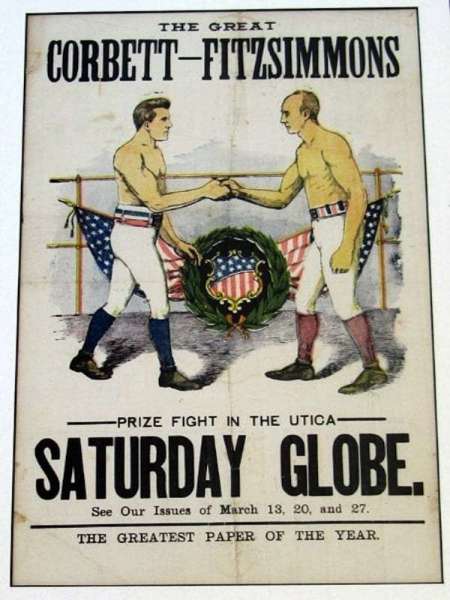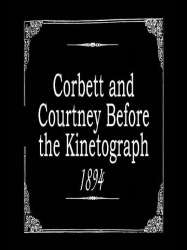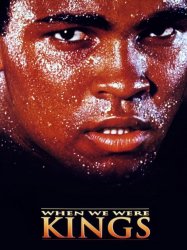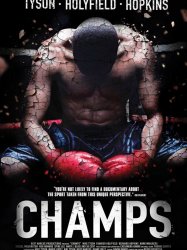The Corbett-Fitzsimmons Fight is a american film of genre Documentary directed by Enoch J. Rector released in USA on 1 january 1897
The Corbett-Fitzsimmons Fight

If you like this film, let us know!
- Infos
- Casting
- Technical infos
- Photos
- Videos
- Film quotes
- Characters
- Music
- Awards
Released in USA 1 january 1897
Length 1h40
Directed by Enoch J. Rector
OriginUSA
Genres Documentary
Themes Sports films, Martial arts films, Boxing films, Documentary films about sports, Le boxe anglaise
Rating52%










The Corbett-Fitzsimmons Fight is an 1897 documentary film directed by Enoch J. Rector depicting a boxing match between James J. Corbett and Bob Fitzsimmons in Carson City, Nevada on St. Patrick's Day the same year. Originally running at over 100 minutes, it was the longest film that had ever been released to date; as such, it was the world's first feature film. The technology that allowed this is known as the Latham loop, and Rector was a rival for claiming the invention of the device. He used three such equipped cameras placed adjacently and filming on 63mm nitrate film. Only fragments of the film survive today. The known fragments were transferred in the 1980s from a print owned by Jean A. LeRoy of New York City, the transfer done on a specially built optical printer to convert the film to 35mm film.
The film was also the first ever to be shot in widescreen, with an aspect ratio of about 1.65:1. According to Dan Streible, The Corbett-Fitzsimmons Fight is "one of the earliest individual productions to sustain public commentary on the cinema." The film is so important to film history that Luke McKernan declared, "it was boxing that created the cinema."
In 2012, the film was added to the National Film Registry at the Library of Congress as a "culturally, historically, or aesthetically significant film".
Synopsis
The film no longer exists in its entirety; however, it is known from contemporary sources that the film included all fourteen rounds of the event, each round lasting three minutes. This was not unusual for a boxing film, although each round would previously have been presented as a separate attraction. What made this film exceptional is a five-minute introduction that showed former champion John L. Sullivan (whom Corbett defeated in 1892) and his manager, Billy Madden, introducing the event, the introduction of referee George Siler, and both boxers entering the ring in their robes.Comments
Leave comment :
Suggestions of similar film to The Corbett-Fitzsimmons Fight
There are 0 films with the same director, 8975 with the same cinematographic genres, 4182 films with the same themes (including 4 films with the same 5 themes than The Corbett-Fitzsimmons Fight), to have finally 70 suggestions of similar films.If you liked The Corbett-Fitzsimmons Fight, you will probably like those similar films :

Directed by William Kennedy Laurie Dickson, William Heise
Origin USA
Genres Documentary
Themes Sports films, Martial arts films, Boxing films, Documentary films about sports, Le boxe anglaise
Rating53%





James J. Corbett and Peter Courtney both take part in a specially arranged boxing match under special conditions that allow for it to be filmed and displayed on a Kinetograph. The match consists of six one-minute rounds. James J. Corbett was a boxing hero of the time while Courtney was the underdog.

China Heavyweight (2012)
, 1h30Directed by Yung Chang
Origin Chine
Genres Documentary
Themes Sports films, Martial arts films, Boxing films, Documentary films about sports, Le boxe anglaise
Rating63%





In 1959, Mao Zedong had imposed a ban on the sport of boxing in China considering it "too Western and brutal". The ban was lifted in 1987 and boxing began being taught in schools.

When We Were Kings (1997)
, 1h29Origin USA
Genres Documentary, Historical, Musical
Themes Films set in Africa, Sports films, Martial arts films, Boxing films, Documentary films about sports, Le boxe anglaise
Actors George Plimpton, Spike Lee, Norman Mailer, Malick Bowens, Miriam Makeba, Drew Bundini Brown
Rating78%





En 1974, à Kinshasa, capitale du Zaïre, a lieu une rencontre historique entre les deux poids lourds les plus reputés des Etats-Unis, Mohammed Ali, alias Cassius Clay, et George Foreman. A trente-deux ans, Ali va tenter de reconquérir le titre de champion du monde face à Foreman, vingt-cinq ans, auréolé de ses victoires sur Frazier et Norton. Le 30 octobre, le stade de Kinshasa ouvre ses grilles à 4 heures du matin.
 , 3h34
, 3h34Directed by Ken Burns
Origin USA
Genres Documentary
Themes Films about racism, Sports films, Martial arts films, Boxing films, Documentary films about sports, Documentary films about racism, Documentary films about law, Documentary films about historical events, Documentaire sur une personnalité, Le boxe anglaise
Actors Keith David, Samuel L. Jackson, Adam Arkin, Philip Bosco, Kevin Conway, Brian Cox
Rating82%






On the Ropes (1999)
, 1h34Directed by Nanette Burstein, Brett Morgen
Origin USA
Genres Documentary
Themes Sports films, Martial arts films, Boxing films, Documentary films about sports
Actors Sam Doumit
Rating72%






Champs (2015)
, 1h25Origin USA
Genres Documentary
Themes Sports films, Martial arts films, Boxing films, Documentary films about sports
Actors Mark Wahlberg, Denzel Washington, Ron Howard, Spike Lee, Mary J. Blige, 50 Cent
Rating71%






Cinderella Man (2005)
, 2h24Directed by Ron Howard, Ang Lee
Origin USA
Genres Drama, Biography, Documentary, Historical, Romance
Themes Sports films, Martial arts films, Boxing films, Le boxe anglaise
Actors Russell Crowe, Renée Zellweger, Paul Giamatti, Bruce McGill, Craig Bierko, Paddy Considine
Rating79%





James J. Braddock is an Irish-American boxer from New Jersey, formerly a light heavyweight contender, who is forced to give up boxing after breaking his hand in the ring. This is both a relief and a burden to his wife, Mae; she cannot bring herself to watch the violence of his chosen profession, yet she knows they will have no good income without his boxing.

Assault in the Ring (2009)
, 1h23Genres Documentary
Themes Sports films, Martial arts films, Boxing films, Documentary films about sports, Documentary films about law
Rating74%





The documentary examines a boxing match that took place between undefeated prospect Billy Collins Jr. and Luis Resto. The fight was on the undercard for a bout between Roberto Durán and Davey Moore. Resto unexpectedly beat the highly touted Collins in a 10-round unanimous decision; however, after the fight, Resto's gloves are found to be missing a significant amount of padding, an illegal tampering which allowed Resto to inflict greater damage on Collins during the fight. What began as a boxing match turned into a life altering moment for both participants - Collins' career dreams ended and Resto and his trainer Panama Lewis landed in prison for their illegal actions. The subsequent investigation and trial have led many to declare this bout the darkest day in boxing history.

Shadow Boxers (1999)
, 1h12Origin USA
Genres Documentary
Themes Sports films, Martial arts films, Boxing films, Documentary films about sports, Documentaire sur une personnalité
Actors Michael Bentt
Rating69%





Bankowsky began working on a film about women's boxing in the early 1990s, when she was training to fight at Gleason's Gym in Brooklyn. Filming commenced at the 1995 Golden Gloves competition, the first year the tournament was open to female participants, a group which included Bankowsky herself. After filming the Golden Gloves, Bankowsky began searching for the woman she thought would be the first truly great female champion. After meeting with Barbara Buttrick, founder of the WIBF, who was in the process of starting a global database of women interested in the sport, Bankowsky came across footage of Rijker and decided she would be the perfect subject for her film.

a.k.a. Cassius Clay (1970)
, 1h19Origin USA
Genres Documentary
Themes Sports films, Martial arts films, Boxing films, Documentary films about sports, Documentaire sur une personnalité
Actors Richard Kiley, Stepin Fetchit
Rating66%





 Connection
Connection